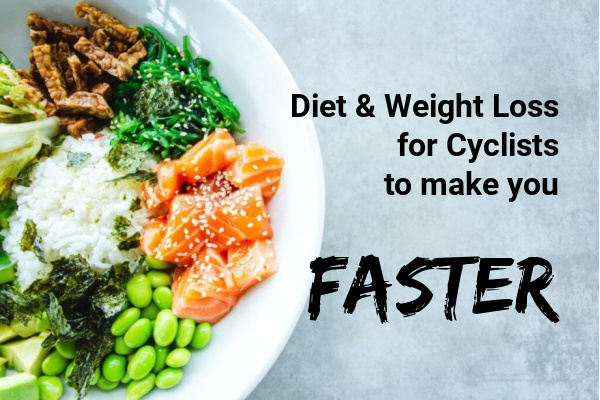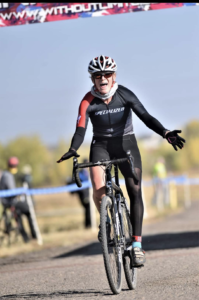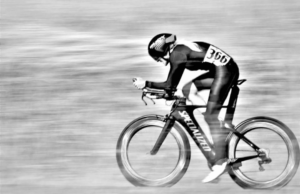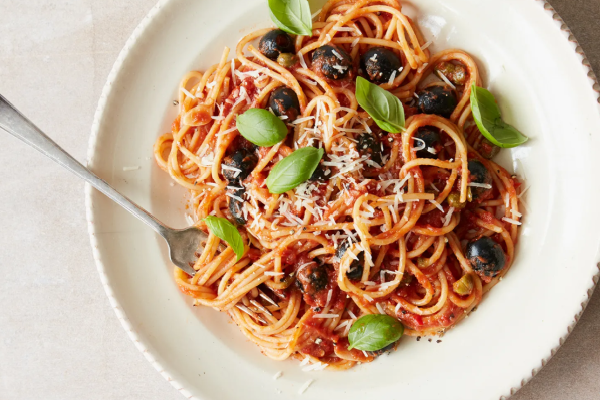
Diet And Weight Loss To Make You Faster
Nutrition and food choices are a key component of weight loss for all endurance athletes, including cyclists. When done correctly, weight loss can have a huge
Writer’s note: At 46 years, I am either approaching or well into middle age (depending on the source). Recently, I have found myself reading as many articles as I can addressing the existential midlife crisis. In doing so, I discovered an inspiring blog post “10 Clarifying Questions to Ask in Midlife” by a midlife coach named Sara Smeaton. I realized I was asking myself the wrong questions. The idea for this article was inspired by that post. Who do I want to be? What gives me energy? How can I keep evolving? I am grateful to share the stories of two women who asked themselves these essential questions, overcame adversity, and ran with it.

This week, we’re tipping our chapeau to two incredible women -Diane Granger and Betsy Mercer- who are racing well into the years when many have retired, or opted for the slow lane.
Competing in duathlons, triathlons, and a myriad of bike races keeps the stoke high for Granger and Mercer.
“It (competing) keeps me surrounded by so many people that are integral to my life!” enthused Mercer, 47.
“So many competitors, race directors, volunteers, and racing friends truly are my family and my support system. And I love the feeling of crossing the finish line after a hard effort. There is no feeling like it,” she continued.
Both athletes began competing in adulthood and overcame mental and physical adversity.
More importantly, their stories also flip the middle age/senior years now what? narrative on its head, by laying out the possibility in front of them.
From Granger and Mercer, we learn that it’s never too late to start competing, that it’s okay to start small and to sometimes embrace the suck.
These women have learned how to reshape goals, and how to listen to what their body and heart are telling them. Finally, they demonstrate that the journey is never linear, but filled with highs and lows.
Their stories celebrate the power years- the years where the combination of lived experience and wisdom behind them and possibility in front of them provide untold power and inspiration.
Who do I want to be?
At 55, Granger entered her first time trial series and won her class. A decade later, Granger became the Time Trial National Champion.
her class. A decade later, Granger became the Time Trial National Champion.
“There used to be a Thursday evening time trial series at Bear Creek Lake Park, so I thought I’d give it a try. It was so much fun, that I thought I might enter a road race!” said Granger, 65.
The way she saw it, the best way to ease into getting back into competition was through time trials. According to Granger, time trials were the “…least intimidating way to start racing, as there are no mass starts, no riding in a group, none of that.”
“At the time I was 55 and no one knew who I was. I think everyone else was watching their nemesis, giving me that chance to come up from the back and win my class. It was there that I met one of my best friends and future teammates. Most women who race are fiercely competitive, but when the race is over they couldn’t be more kind, supportive, and helpful,” she continued.
Granger wasn’t always a competitive athlete.
In her 20s, the Lakewood resident competed in 5Ks, 10Ks, and duathlons. Although she was more of a runner, her bike times “we often up there with the best.”
“As with many young athletes, family and career ended that competitive time of life. I suspect that’s part of the reason younger female cyclists retire,” Granger said.
When Granger was 49 she had her hip resurfaced. Her husband Mark was worried she’d wear it out and bought her a new bike- a Trek Madone 5.2. One of their favorite workouts became a fast hour ride from their home in Lakewood, one lap around Bear Creek Lake Park, and back home.
She didn’t begin to compete until 6 years later. And when she did begin to race again, she soared. What stokes her passion?
 “The friendships I have made, the adventures we’ve had, and yes, the adrenaline rush keep me going. For me, training is much more inspirational when I have a race or Gran Fondo to shoot for,” she explained.
“The friendships I have made, the adventures we’ve had, and yes, the adrenaline rush keep me going. For me, training is much more inspirational when I have a race or Gran Fondo to shoot for,” she explained.
Despite some crashes and a few joint replacements, she considers cycling as a fantastic lifetime sport that “offers a great way to recover from almost all setbacks.”
“Ten years from now, I may be on a e-bike, but I still plan on being out there!” she exclaimed.
The reigning national time trial champion has a surprisingly doable training regime.
“My training isn’t that crazy. I don’t put in huge miles. In the winter, I strive for 6 hours per week on the trainer, plus a day of walking. Cyclists tend to have weak bones, so I’m trying to maintain bone density,” she said.
Once warmer weather returns, she normally gets in about 120 to 140 miles per week.
Each Wednesday, she and a couple of others do what she describes as “tough little team rides. We have so much fun together, really push each other, and always have a great time.”
Rethinking boundaries
This season, she is keeping her priorities local. “I’m not inclined to defend my title. There are way too many fun opportunities closer to home,” said Granger.
Specifically, there’s the Lookout Mountain Hill Climb in May, and the Karen Hornbostel Memorial Time Trial Series on Wednesday evenings at Cherry Creek Reservoir. Wednesdays are considered date nights for her and her husband- after the time trial, they go out and celebrate with Mexican food.
“I’m starting to dabble in gravel racing, so my next big race is the HEMI, part of the Mad Gravel weekend on Memorial Day. It’s 100 miles and I AM questioning that decision,” she laughed.
Being a grandmother, her babysitting duties will take her to Utah in July for the Cache Valley Gran Fondo which is a qualifier for the National Gran Fondo Championships.
Her advice for those interested in competing?
“For anyone wanting to start racing there are plenty of great coaches out there to help you get started. I would recommend a time trial or a hill climb since those are the least intimidating events. You could also start with a charity ride to get some idea of how you compare to other riders,” she suggested.
How can I keep evolving?
Mercer’s introduction to bike racing and triathlons began in a rather unusual way.
 In 2009, the Parker resident found herself in the midst of a divorce and agreed to exchange the former couple’s Dyson vacuum for her soon to be ex-husband’s road bike.
In 2009, the Parker resident found herself in the midst of a divorce and agreed to exchange the former couple’s Dyson vacuum for her soon to be ex-husband’s road bike.
Up until then, she had always ridden recreationally, but had never clipped into pedals or had any given thought to competing. In fact, she had to peruse YouTube videos to figure out how to fill a presta valve, and she admitted that she “didn’t really understand that bikes come in different sizes.”
“He told me that I’d never learn to ride that thing. He was about 6 inches taller than me, but I definitely learned to ride that huge bike!” Mercer laughed.
Never a member of a racing club or team, Mercer did things her way.
She began to ride long distances, and later competed in a duathlon while riding her ex’s massive road bike. That winter, she and a friend learned how to swim.
In 2010 at age 34, Mercer did her first triathlon, which was also her first Ironman event: IM Texas 70.3. She then began racing in earnest, including triathlons, and bike racing (time trials, hill climbs, road races, and mountain bike races).
After getting in a few more IM 70.3’s that year, she qualified for the 2011 Ironman 70.3 Worlds.
In the years that followed, she added another racing event to her repertoire (cyclocross), competed in tris of all distances, and also full Ironmans.
What comes up, must come down
Those high points were accompanied by devastating low points.
Things came to a screeching halt in 2014 when she was diagnosed with Avascular necrosis (also known as osteonecrosis), which is the death of bone tissue due to a lack of blood supply. In short, it can lead to tiny breaks in the bone and cause the bone to collapse.
Mercer went from competing in full Ironmans to using crutches and a scooter to get around.
“It was excruciatingly painful and very depressing. I tried everything to get better. Eventually, I just wanted to be able to carry a load of laundry to the washing machine, or buy groceries without taking two bags back at a time on crutches,” said Mercer.
This was not the first time she had learned to deal with adversity, or feeling emotionally and physically drained.
In addition to struggling with eating disorders, in her 20s, Mercer had learned she had a genetic clotting disorder, resulting in a massive blood clot developing in her left leg that stretched from her groin to her toes.
She had also developed a pulmonary embolism, which destroyed about 30 percent of the lung tissue in her left lung.
Somehow, she had overcome that.
Fast forward several years later, another physical barrier appeared in the form of Avascular necrosis. She had to evolve as an athlete once again.
During this time, cycling offered her a lifeline that she eagerly grasped.
“After about 6 months (2015) I still couldn’t do weight bearing activities, but I could ride as much as I wanted. That’s when I hit my peak bike racing, for about two seasons,” she said.
It was approximately 19 months before she could walk normally again- thankfully, she could bike race. But, competing in any future triathlon was out of the question.
“I tried every treatment possible, and nothing worked, so I finally gave up. I gave up any hope of ever running again, and truly made peace with it. By that time I was a 3-time Ironman, and it had become my identity,” she explained.
After a few years of serious bike racing and limited walking, she realized that her leg was starting to feel better.
Amazingly, she set the goal of trying to finish a sprint triathlon the next year- and she did. She ran 3.1 miles that year, and crossed the finish line of the Summer OPEN, in tears.
That day, her mentality changed. Racing wasn’t who she was. It was something she loved to do. Something she felt honored to do.
The following year she did an Olympic triathlon, then turned her focus to another IM 70.3.
“I couldn’t believe I could run 13.1 miles again. I was overwhelmed with joy and emotion and gratitude,” Mercer maintained.
Finding joy
 “I’m an all or nothing person. I truly don’t understand the mentality of just racing for fun. If I’m racing, I’m going to try to win, I’m giving it all I have. I don’t enjoy putting in a partial effort. But, I think this creates a constant cycle of highs and lows,” she continued.
“I’m an all or nothing person. I truly don’t understand the mentality of just racing for fun. If I’m racing, I’m going to try to win, I’m giving it all I have. I don’t enjoy putting in a partial effort. But, I think this creates a constant cycle of highs and lows,” she continued.
She pointed out that while winning and knowing that she did her best is fulfilling, the expectation from herself and others can be suffocating.
That’s where support from her racing community comes in.
“When I found the racing community, I finally found a place where I belonged: a place where I felt safe and supported. With so many friends from triathlon and bike racing, I realize that my social network brings me joy,” she said.
It was through the racing community that she most notably met her fiance, photographer Ryan Muncy, who was shooting many of the races she was competing in.
“I also find racing a good outlet for aggression, sadness, worry, and fear. I can channel all of that for a race, and after crossing the finish line, I feel better; it’s therapy,” she explained.
In 2022, she and her fellow Ironman and bestie Michael Jones did Ironman Chattanooga.
At age 46, Mercer had what she describes as the most satisfying Ironman ever.
It rained for nearly all of the 116 miles during the bike portion, and the run was brutal. As the sun set, she went through the finisher’s chute and crossed the finish line all alone- the electrified crowd was screaming.
She had qualified for Kona.
“It was my perfect race, my perfect finish. I gave it all I had, and I was satisfied! But, I decided to pass on Kona. Five Ironmans is enough. I never want to tarnish my Chattanooga finish, and I don’t want to train or sacrifice like that anymore,” she stated.
Being true to yourself
As she becomes more aware of what brings her joy, Mercer keeps refining and evolving. This year, she’ll keep racing 70.3’s and shorter.
Her typical workouts consist of doing whatever she feels like. With the exception of learning how to swim, she’s never used a coach because she hates being told what to do (we all get enough of that at work, she explained)
Although she trains hard, she does what she wants, when she wants. No drills, no set schedule.
Like Granger, her workouts are surprisingly “normal”.
“I want my free time to be MY time. Before the AVN, I beat myself into the ground. Up at 3 AM, a two hour workout, off to work at 6:30 AM, then another 2 hr workout after work. I was exhausted, all the time. With age comes wisdom, and I now know I only have so many running miles left in my left leg. I want to race for a long time, so I’m cautious. I workout (assuming no Ironman) about an hour a day, with 1-2 days off/week,” she said.
What wisdom about competing has she gained throughout the years?
“Listen to your body!! If my body says rest, I rest. If my body says skip this race that you paid for, or it’s too icy out, I skip the race. If my body says eat more cupcakes, I eat more cupcakes!” she exclaimed.
When Mercer competes, she races so she’ll have no regrets.
“I race as hard and as well as my body and mind have it in them on that particular day. They may not be 100 percent, but I give what I have. Race without regret, and without having to make excuses not to someone else but to yourself,” she concluded.

Nutrition and food choices are a key component of weight loss for all endurance athletes, including cyclists. When done correctly, weight loss can have a huge

Photos are rolling from Mt. Blue Sky/Bob Cook Memorial Hill Climb p/b Team Evergreen on that was held this past weekend. The day lived up

Pad Thai is a popular street food in Thailand, which is whipped up quickly and packed full of flavor. It’s one of our favorite post-ride

Tubless Tires: Myth or Magic? Justin Bolinger of I Know a Guy Bicycles “UNBOXES” the Truth about this setup (Should you go Tubeless?) Recent Posts

Last week, Douglas County hosted the Natural Grocers Criterium at their sheriff’s training facility, and the camera of Ryan Muncy/Ryan Muncy Photography was on the scene

When you are looking to refuel at lunchtime, go for carbs and quality protein – this pasta dish is ideal. Cycling takes energy, and energy come